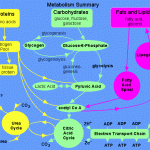Welcome back – last time we looked at the thermic effect of food – how the foods you eat can increase or slow down your metabolism. This time we’re looking at TEA – the Thermic Effect of Activity.
Factors Affecting TEA
It is easy to have an effect on your TEA – move more, sit less, and exercise 6 days a week using HIIT & metabolic conditioning protocols (like those found in upcoming the Lose 20 in 30 Exercise program).
 Weighted vest training is a great example of MetCon training!!
Weighted vest training is a great example of MetCon training!!
Take the stairs, park further away, spend some of each day at work standing up – just add more activity to your day on top of conscious, challenging exercise.
Long traditional cardio is NOT the best way to increase your TEA – you need to use an interval style approach to max out your TEA. The best way to recondition your metabolism is to use a mix of resistance training, interval training and a training style called Metabolic Conditioning. (MetCon)
Ensuring that you work out using strategies that elicit a high metabolic cost, uses high EPOC inducing exercises will increase your RMR and reset your metabolic set point over a short period of time (you’ll see changes in under 30 days!). Again – the use of high intensity intervals, metabolic conditioning, and resistance training are the best forms of exercise to achieve a faster metabolism and a leaner body. (see my other post on HIIT)
The more active we are, the harder we work our bodies & increase the demands on our muscles, the more energy we need for fuel and more importantly the more energy we need for recovery. Regular, challenging exercise increases lean muscle mass and ‘teaches’ the body to burn kilojoules at a faster rate, even when at rest. In this way we can alter what the body currently has as its homeostatic set point for a new one. Remember your body likes things to stay the same so if you add regular exercise this becomes the ‘norm’ and your body adjusts to cater for and adapt to this.
By improving / increasing your TEF & TEA you can in turn raise your RMR. As we have seen – this is important because your RMR accounts for the majority of your calorie / kilojoule burn & use. The higher it is, the more you burn and the leaner you become…
Exercise is the other metabolic affecting variable that we can manipulate, but it needs to be done strategically using the right exercise protocols & techniques.
Metabolic Energy Pathways
There are three different metabolic pathways that the body can use in order to tap into its energy stores.
 Looks complicated but using this to your advantage isn’t!!
Looks complicated but using this to your advantage isn’t!!
Without going in-depth to biochemistry, the three energy pathways are:
- ATP/PC – This is your quickest and most powerful energy source. It is instantly available and requires no oxygen. ATP itself is the raw fuel for exercise as it is the chemical that drives muscular action. However our bodies only store enough for between 6 & 10 seconds – after that it has to start manufacturing more ATP.
- Anaerobic Glycolysis – This is the next quickest energy source and is the way your body creates ATP without oxygen. It is also the process that creates the ‘burn’ in your muscles. This energy system is good for 2 -3 minutes of activity and enables you to continue a relatively high level of activity but it does create a high level of muscle fatigue. This makes it difficult to continue using this metabolic pathway beyond the initial couple of minutes.
- Aerobic– This last system is the slowest to act and is good for fuelling a moderate activity level. However it can sustain this level of activity virtually for as long as there is fuel available to use. The aerobic system is the process your body uses to produce ATP but with oxygen.

Following high intensity activity, the aerobic system is required for recovery and to re-establish balance within the body, removing the metabolic by-products, re-synthesising metabolic compounds such as creatine phosphate and providing energy for the repair of exercise induced tissue damage. (She’s definately got her TEF & TEA working for her!!)
In a simple way, our normal energy system is primarily the aerobic system, with the ATP-PC and Glycolitic systems acting as reserves. They provide extra power when needed, but are a very limited resource in comparison.
When we talk about metabolic conditioning exercise we are talking about a strategic exercise protocol that works all three of these energy pathways. (See the Lose 20 in 30 Exercise manual coming soon!)
That’s it for this week – next time we’ll look at other factors that affect your resting metabolic rate – some will surprise you!!
Be well!!
Tweet us or like us on Face Book!!
